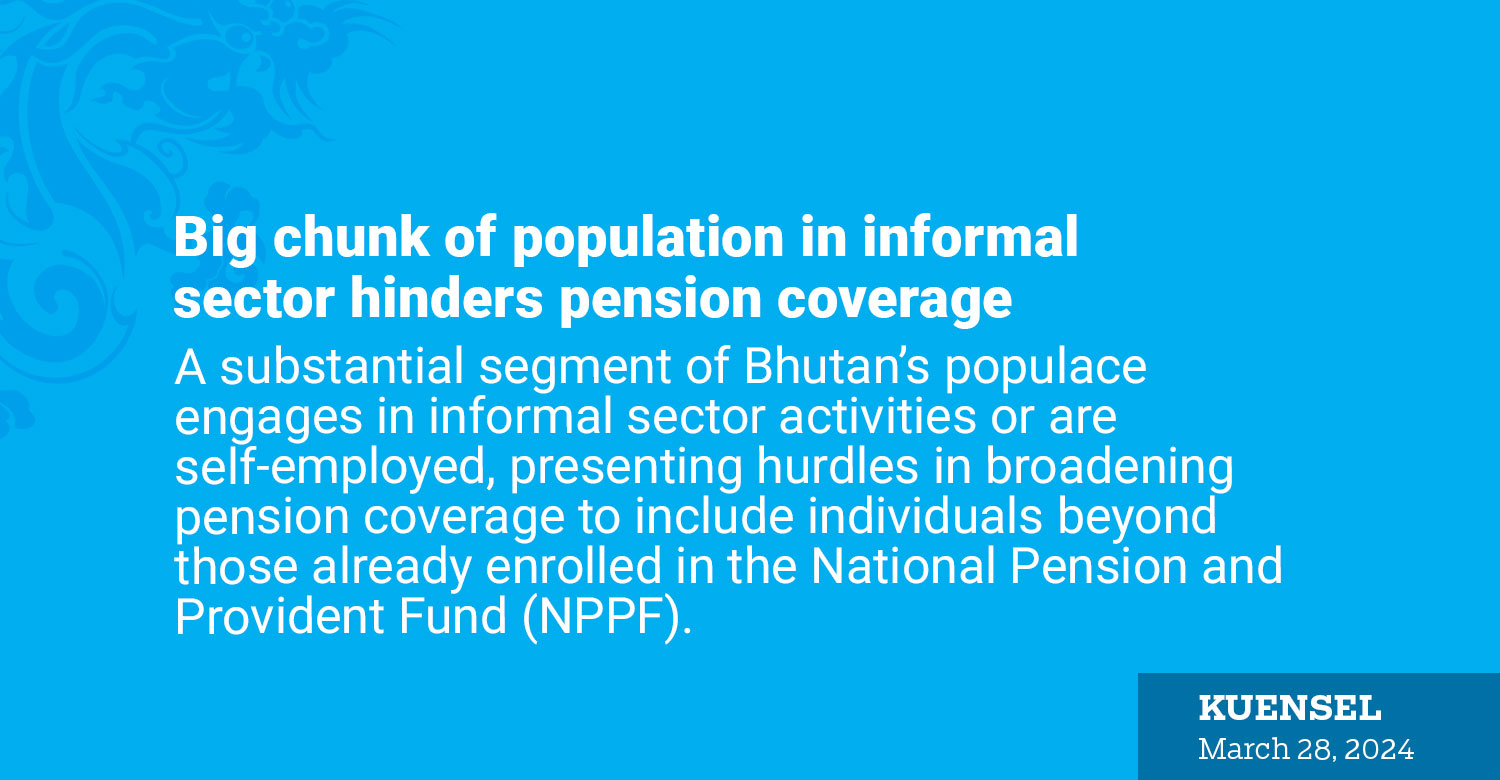Yangyel Lhaden
A substantial segment of Bhutan’s populace engages in informal sector activities or are self-employed, presenting hurdles in broadening pension coverage to include individuals beyond those already enrolled in the National Pension and Provident Fund (NPPF).
Self-employed individuals or those working in the informal sector encompass various occupations such as farmers, hairdressers, or housekeepers.
In a literal sense, individuals are classified as having informal jobs if their employment arrangement is not governed by national labour laws, income taxation, social protection, or eligibility for specific employment benefits.
Currently, NPPF extends pension and provident fund benefits to civil servants, employees of state-owned enterprises, corporations, and the armed forces, constituting about eight percent of the total population.
“The variable nature of self-employment is not always supported by traditional pension plans, and affordability adds complexity to deciding on formal schemes like pensions,” an NPPF official said. “Moreover, managing pension plans for self-employed and informal sector workers entails intricate tasks such as income verification, contribution collection, and record-keeping, which are more challenging than in formal employment settings.”
He pointed out that higher-income countries generally have wider pension coverage compared to lower-income ones, which often only cover those able to afford contributions. “The fluctuating nature of self-employment income poses challenges,” he explained, “as financial instability may hinder regular contributions, affecting retirement savings capacity. This is mainly because income sources are unreliable, making universal coverage difficult.”
“Currently, the members of NPPF who are under the pension and provident fund scheme are members based on mandatory savings requirements and implicitly guaranteed by the government,” the official said. The formal schemes are backed by the executive order (2000) and the royal decree issued by His Majesty the Fourth Druk Gyalpo in 1998.
For those not covered by formal mandatory schemes such as for self-employed individuals, NPPF has introduced a Private Provident Fund Scheme where members pay with a contribution requirement of a minimum Nu. 325 to Nu. 25,000 per month. However, the private PF scheme is not a pension scheme, and members will get back their contributions with returns when they exit membership. The guidelines for the private provident scheme are in place in alignment with requirements set by the Central Bank.
However, the official said there was an absence of an overarching legal framework such as the Pension Act, which limits NPPF from expanding or reforming the formal schemes. “The inclusion of those in the informal sector in the pension scheme will need comprehensive studies as a pension scheme.”
He said that another challenge was weak enforcement of Acts. For example, he said, sections 225 and 226 of the Regulation on Working Conditions, 2022 state that employers and employees shall contribute to the employees’ Provident Fund (PF) account monthly, but it is not enforced in its entirety. “The government must issue directives to all employers to register their employees and self-employed as NPPF members.”
“To address these challenges, a comprehensive approach is needed, designed to take care of income variability, financial education, access to formal financial services, and flexible plan designs essential for the successful expansion of pension coverage in these sectors,” he said.


